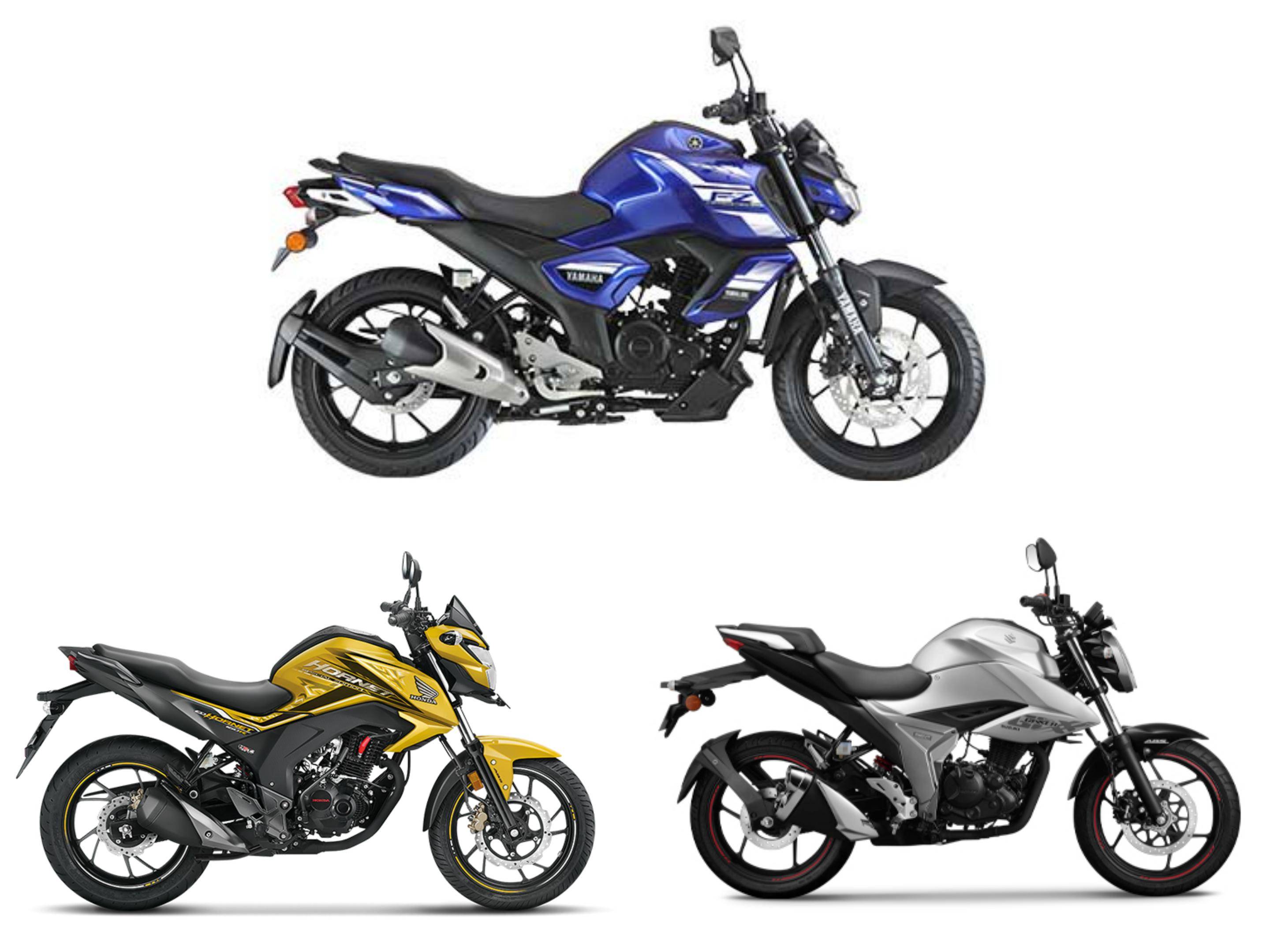BS6 Yamaha FZS-Fi vs Honda CB Hornet 160R vs Suzuki Gixxer: Specification Comparison
Modified On Jun 3, 2020 12:41 PM By Zaran Modyfor Yamaha FZS-FI V3
- 5693 Views
- Write a comment
How much have the upcoming emission norms affected Yamaha’s popular streetfighter?

With BS6 emission norms inching closer day by day, we’re seeing more and more manufacturers launching BS6-compliant products. Yamaha recently jumped on the bandwagon by launching updated versions of its FZ-Fi and FZS-Fi models which meet the upcoming regulations. There has been a drop in power but torque has simultaneously gone up, so can the FZs still take the fight to the competition? We find out by pitting the FZS-Fi against Suzuki’s popular Gixxer and Honda’s stylish CB Hornet 160R on paper.
Powertrain


Let’s start off with the heart of the matter: the engine. This is the only area of the FZ that has been updated, with the rest of the motorcycle remaining unchanged. The Yamaha faces an uphill battle even at the best of times, since it is down on displacement compared to the other two bikes here. Being the only BS6-compliant engine against two BS4 motors, it is unsurprisingly the least powerful and torquey motor here. That being said, its peak figures are produced lower in the rev range compared to the Honda and Suzuki so the lack of grunt shouldn’t feel very pronounced, at least in the city. Yamaha has done its best to mitigate the damage by increasing the compression ratio and eking out some more torque, but we will only get a clear idea once we get our hands on the motorcycle.
The Hornet has the largest displacement and is consequently the most powerful motor here, with the highest torque figure as well. However, it produces its peak figures higher up in the rev range than the other two motorcycles, so one has to work the motor a little harder to extract the best out of it. It is also carburetted at the moment, but will probably have to go down the fuel injection route soon in order to meet BS6 norms. The Gixxer isn’t far behind the Honda in terms of peak output, but produces its numbers at slightly lower rpms, which should make it a slightly more usable and friendlier package. It is already a fuel injected motor but will need to be updated in order to comply with BS6. It will be interesting to see what sort of figures the Honda and Suzuki put out once their engines are made cleaner.
Underpinnings

There isn’t much variation in this segment as far as underpinnings are concerned. All the bikes here are suspended on a conventional telescopic fork and preload-adjustable monoshock. 17-inch wheels are seen across the board and tyre sizes are pretty much identical too. The FZ gets a larger front disc than the Hornet and we have found it to be an excellent braker, while Suzuki doesn’t disclose the diameter of the discs on the Gixxer. Where the Suzuki does shine through is in the cornering department - it is an agile yet stable motorcycle through the twisties. All the motorcycles here feature single-channel ABS, though it is an option on the Hornet.
Dimensions
All three bikes get comfortably low seat heights, but the Honda is the lowest of the lot. There isn’t much to differentiate these motorcycles in terms of weight either: the Gixxer and the Hornet have identical curb weights of 140kg while the Yamaha undercuts them marginally at 137kg. The FZ also gets the tallest ground clearance and narrowest overall width here, which will help on India’s pothole-ridden, densely trafficked streets.
Pricing & Verdict

Even in its most expensive ABS DLX variant with dual disc brakes and single-channel ABS, the Hornet still undercuts the other two by more than Rs 5,000, which is not an insignificant amount in this segment. Most of this can be attributed to the lack of fuel injection on the Honda, because despite being the most affordable bike here, it is quite well equipped. It gets an LED headlight like the FZ, and digital instrumentation like the other two bikes here. Conversely, this also implies that the Hornet will probably receive the biggest price hike when it does eventually become BS6-compliant.

The FZ’s USP is the stress-free, refined motoring experience it offers while returning excellent fuel efficiency. These are excellent traits for a city commuter but when the road widens and the pace picks up, the FZ falls behind in the presence of more powerful motorcycles like the Hornet and the Gixxer. This is made worse by the fact that the Yamaha is now the most expensive motorcycle here. The other two bikes here can offer a more spirited riding experience and the Gixxer in particular will also keep you entertained in the twisties.
